How to Create Content for Email Marketing?
One of the most significant advantages of content marketing is the ability to create an audience rather than “renting” one through ads. Email is the most effective way to keep in contact with that audience, but it is often used solely for sales rather than sharing the brand’s content.
Email marketing is a permission-based channel. When anyone signs up to receive your emails, they are requesting more details. They may need to learn more about a topic, or they may have a challenge that your product can solve.
In this article, I’ll share with you the best content email marketing tips you can use to attract more customers. These tips are timeless and can be used in any sector. Some of them can be used together to achieve greater results.
Why writing compelling email content is important

You can create a beautiful email, but it will be useless unless it contains a message that is relevant, well-written, and captivates the reader’s interests.
With nearly 90% of B2B marketers using email marketing, you’ll need some seriously strong email copy to stay ahead of the competition. It could be your hidden weapon for sending emails that:
-
Have a distinguishable voice that is personal and relevant
-
Convey a clear and compelling message
-
Build a relationship with your email audience
-
Share a product or service
-
Tell your story
-
Drive conversions
However, if you want to achieve these goals, your email content needs to be top-notch. So let’s jump right into the top email marketing tips to help you generate content that resonates.
How to Create Content for Email Marketing?

Every email is a blank canvas, full of potential and opportunities. It is your choice whether to seize or squander this opportunity. If you want to build better email content, you’ll need a centered approach, an understanding of human nature, and the ability to experiment before you find the formula that works.
You do not, however, have to start from scratch. Learning best practices for email marketing will put you ahead of the competition even before you submit your first email.
Keep in mind that even small mistakes can result in your prospects unsubscribing from your mailing list. Worse, if you are perceived as too spammy, users can blacklist your email address, resulting in all of your emails ending up in spam folders.
That is the polar opposite of what you want. So let’s take a look at how to make your email marketing strategy work for you rather than against you.
Understand and write for your target market

You don’t talk to your parents the same way you do to your children. Similarly, you certainly wouldn’t talk to anyone you’ve just met in the same way you would to someone you have known for years.
You should approach your emails in the same way: tailor the content to your audience. Spend time where your target audience hangs out to learn more about them.
Though you probably already know a thing or two about your target customer based on your experience, you should still perform research to learn more about your target audience.
Participate in groups, connect with them on social media, and ask them to fill out surveys. You have a variety of other options:
-
Respond to queries on Quora and Yahoo! Answers.
-
Attend meetings and exchange business cards. More significantly, interact with others and learn about their interests.
-
When you want to find out what you should talk about in your content, poll your current list.
-
Examine your competition. Who is taking notice of them? How are you going to reach out to the same people?
Apply the insights about your customers to your future email. Pretend that your target audience is sitting at the table in front of you, waiting to read what you’re going to generate.
Benefits over features
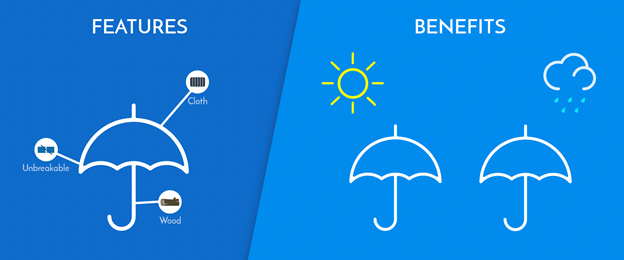
You may have already heard this a thousand times, but it never hurts to be reminded! Features are simply information about your product or service, while benefits will provide your subscribers with a compelling, emotional incentive to purchase it.
One simple way to do this is to use direct pronouns, as in the Goop newsletter below, which says, ‘A few of these quick tricks will leave you with fresh, natural-looking, no-makeup radiance…’ Using the word “you” as much as possible makes your email content more personal and relatable.
Another strategy is to begin your content with an action verb, telling people exactly what they can do with your product. And, before you hit the “send” button, give it one last read and ask yourself, “so what?” The most effective email marketers produce content that is relevant and provides a solution to common problems. Don’t just tell your subscribers how amazing you are; show them how you can bring value to their lives.
Use clear, actionable language
Use the right words to deliver the right messages
Don’t waste your audience’s time. Use clear, actionable language to deliver your point across. Use the following formula to better get their attention.
Subject + verb + clause
Consider the following example. Choose the following sentence that is simple, actionable, and follows the formula:
-
This online course can help you transform your life.
-
If you want to change your life right now, you will want to try this online course.
The first is the right answer. It not only follows the subject-verb-clause formula, but it is also simpler and easier to understand. You can still use your brand voice when having fun. However, you can value your audience’s time by using fewer words.
Match your subject line with body copy
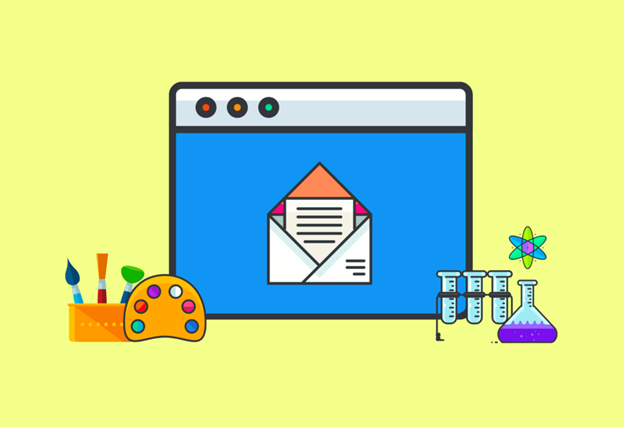
Your email’s subject line is what your email promises. It informs the receiver of what to expect inside the email. If your subscriber reads the email and feels misled by the subject line, they are unlikely to open another email from you. That is why your subject line and body copy must be consistent.
It’s tempting to use an overdramatic subject line lifted from a Buzzfeed article but avoid the temptation. Or, at the very least, use the technique sparingly. If you are truthful and frank with your readers, you will gain their trust and loyalty.
Of course, this doesn’t mean you can’t spice up your subject lines to catch people’s attention. The best way to raise open rates is to inform your readers what they will get from the email in plain English.
Also, explain how they can profit from your time:
-
Download a free template to help you improve your time management skills.
-
Do you want to save 50% on my next course?
-
Get a free copy of my latest novel… There are no strings attached!
-
Discover three quick ways to get organized in 15 minutes or less.
Make certain that every word of your body copy is relevant to the subject line. Avoid going off on irrelevant tangents or confusing your reader. Subject lines and email bodies that are well-aligned keep the audience focused and interested. If there is an intention to mislead, your readers will notice it.
Personalize each email
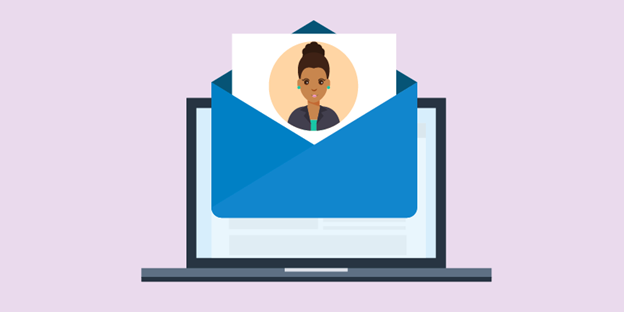
Email service provides that support personalization tokens can be the most valuable asset in email marketing. A personalization token transforms a generic term or expression into one that is tailored to the recipient.
The name token is the most popular choice. Which would you prefer to see at the top of an email you’ve opened:
-
Dear Reader,
-
Dear Steve,
Most people would choose the latter, as long as the name is right. Other personalization fields can be used to increase familiarity and trust between you and your readers.
You might, for example, include the recipient’s location or the name of his or her company. Only don’t go too far. You don’t want to go from being a savvy email marketer to a savvy stalker.
Write in the second person

A conversational tone is beneficial for any type of marketing, but particularly for email. Remember that you’re sending an email to a specific recipient, even though it reaches dozens, hundreds, or thousands of people.
With each email, speak directly to the intended recipient. Instead of “he or she,” say “you.” This gives the impression that you’re having a one-on-one conversation with the recipient. This contributes to the email not sounding too salesy or contrived.
You may also use first-person references to make the content feel more personal. Instead of simply speaking “at” the reader, speak “to” the reader by expressing your own experiences.
The reader would not be confused if you switch between the first and second person. However, if you abruptly turn to the third person, you can confuse them.
Show relevance right off the bat

You are enthusiastic about your stuff. You could be tempted to go on and on about your subject area and your expertise in your emails.
Refrain from giving in to the impulse. Instead, show the email’s relevance as soon as possible. The subject line, as well as the first line of the email body, should make it clear what you’re trying to say.
This does not imply that you must send emails with just a few sentences. Longer-form content can be beneficial, but only if you capture the reader’s attention from the first lines.
Assume you’re sending a template copy you’ve created. In the subject line and first sentence, mention the template download. Then write any additional copy you believe might be of interest to the reader. Have a link to the white template download early in the copy and at the bottom of the email.
Prioritize clarity

The importance of clarity cannot be overstated. If your subscribers don’t understand why you’re sending them an email, they’ll click the “delete” button and move on. Don’t waste your time with clever puns and witty witticisms. Each email you send out should have a clear purpose:
-
Educate your audience with tips or facts
-
Announce a new online course
-
Get your readers engaged with you on social media
-
Encourage people to share your content
Once you’ve decided on an objective for your email, make sure every sentence, picture, and link contributes to that goal. Don’t go off-topic, even though you have something amusing or interesting to share. You can make your email copy as catchy as you like as long as it is relevant to the intent of the email and clear to the reader.
Don’t sell before the prospect is ready
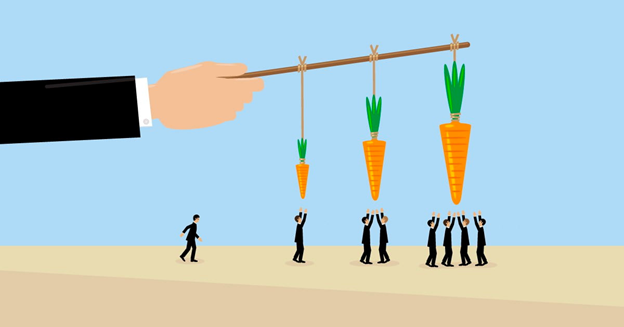
Have you ever purchased a car from a dealership? When you get out of your car, the salesperson typically welcomes you. Then you exchange jokes, talk about the weather, and talk about what you want in a new car. You are welcome to look at any of the vehicles on the lot. The salesperson inquires about your job, hobbies, or the local sports team.
It all comes down to priming the customer. Good salespeople understand that customers need some wooing before they are ready for a sales pitch. This knowledge can be applied to email marketing. If you begin an email with, “Dear Reader, Please Buy My Product,” you’re unlikely to get a customer. Ask for the sale only when the prospect is ready. What exactly does this mean?
In email marketing, you must first offer before you can receive it. In other words, if you share anything valuable with your readers, they will be willing to share the contents of their wallets in return.
That is why your link to your sales page or social media handles should appear only after you have provided something of value. This could be a free ebook, a coupon code, tips, or something valuable.
Give prospects a reward for reading

Your customers expect – and value – incentives. We already discussed that you shouldn’t make your sales pitch until you’ve provided value for your audience and that you need to give first if you want to get it. The giving part is the reward.
Each email should include something of value, such as facts, education, entertainment, a freebie, or a special coupon or promotion. Choose the incentives depending on the quality of the email and the latest marketing plan.
Show what the recipient will miss
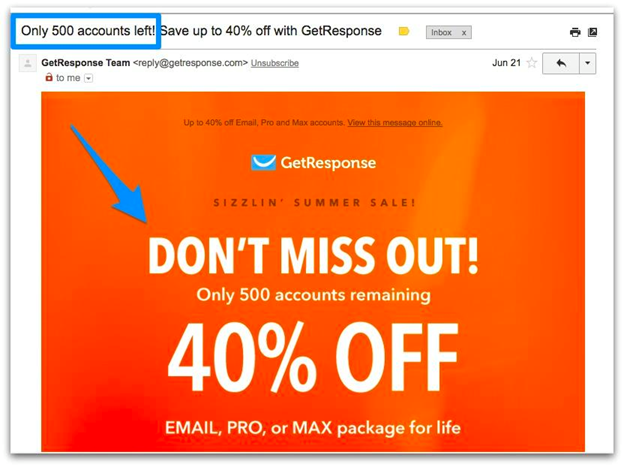
As this is a common social media term, you’ve probably heard of FOMO (fear of missing out). Although the phrase seems to be overused, it does have some value. People don’t like missing out on opportunities that might help them. It’s the same as finding out about a deal at your favorite store after it’s already finished.
In an email marketing campaign, you can use FOMO to inspire subscribers to open and read your messages. Make those opportunities transparent in order to maximize conversion rates and revenue.
Show a clear deadline

Your CTA should provide a special promotion to entice prospects to become customers. You may sell a package deal for two or three of your courses, or a 20% discount coupon.
Make your CTA time-sensitive if you wish to use a promotion. If your prospect does not take advantage of it by the deadline, they are out of luck. It’s called urgency which is one of the marketing arsenal’s most powerful weapons.
Be brief

Everyone is busy these days. When selling to prospects, you must keep this in mind. Your prospective customer will appreciate your brevity if you keep your email short and on-point. They’ll understand why you don’t want to waste their time. You may use word economy to convey the message in fewer words.
There are a number of other approaches you may take to make brevity your top priority.
-
Deliver only one point. Since email marketing is a long game, don’t feel obligated to tell your prospects all in a single message.
-
Edit like your life depends on it. Learn to edit your own copy or employ a strict editor. Don’t be afraid to kill your darlings, figuratively speaking.
-
Use simple words. Big words and fancy phrases might sound nice to you, but they irritate your prospects. Keep an eye out for unnecessary adjectives and other parts of vocabulary.
Many of your email subscribers will remain with you for months, if not years. You have plenty of time to tell them what you want them to hear. Each email should be as short as possible.
Insert multiple links
While you want your emails to contain simple and convincing CTAs, you can also provide other ways for your customers to interact with your business. Add a number of links in the body of your email.
You may provide hyperlinks to blog posts, YouTube videos, social media pages, and other web assets. You are guiding your prospects into the sales funnel. Your prospective customers might need to engage with your brand many times before they decide to purchase your products.
When you add links, you are also adding meaning. Inform your prospects where they can find useful information. Just remember to guide them to your content rather than someone else’s. If you add a link to something that has nothing to do with the anchor text of the link, your prospects would be duped.
For example, don’t tell your subscribers you’re linking to a freebie and then direct them to a page that needs them to do something else in order to get the freebie. Maintain an open and truthful tone in your language.
Craft a can’t-miss call to action

We’re back to the too-important-to-be-ignored CTAs. It’s crucial to keep talking about this aspect of your email marketing strategy because it’s always the most relevant for success.
At its most simple, you’re requesting a click. Nothing else. You certainly hope that your prospect goes above and beyond. Assume you ask your customers to sign up for your most recent online course. You’ve spent your email extolling the advantages (rather than the features!) of your course, and you’re now ready to unleash your pitch.
Several factors influence the success of the pitch:
-
Wording: Keep it simple and to the point. Don’t beg or begrudge the click. Simply request it.
-
Make your CTA stand out with the design. Put it on a button so that it appears to be clickable. Make use of a particular font. Make it a different color.
-
Content: A strong CTA requires a mention of the possible benefits. Don’t simply say “click here.” Explain why your audience should click.
Use the P.S
The good old P.S. did not perish with the advent of chain letters. They’re still going strong, and for good reason: they’re successful. A P.S in email draws attention to itself because it is separate from the rest of the email.
You’ve already completed the email and added your CTA. But wait, there’s more. This is your chance to capitalize on the readers who did not respond to your call to action. You are free to use as many P.S’s as you want. Simply add an extra P to each side.
Encourage Subscribers to Share
The aim of creating email marketing content is to expand your list. Start with the people you already reach: your subscribers, if you want to expand your subscriber list. Let your subscribers know that they are free to share your content with others with every email you send. Tell them to forward your email to their friends and family who may be interested in your content.
They may or may not share, but it never hurts to ask. Include media share buttons while you’re at it. You will gain instant visibility if your subscribers mention your email campaign on Twitter or add a link to your website on Facebook.
Final words
That’s it! I hope this article has provided you with valuable information about how to generate content for email marketing. Please feel free to leave comments below for a further discussion on this topic!
New Posts






